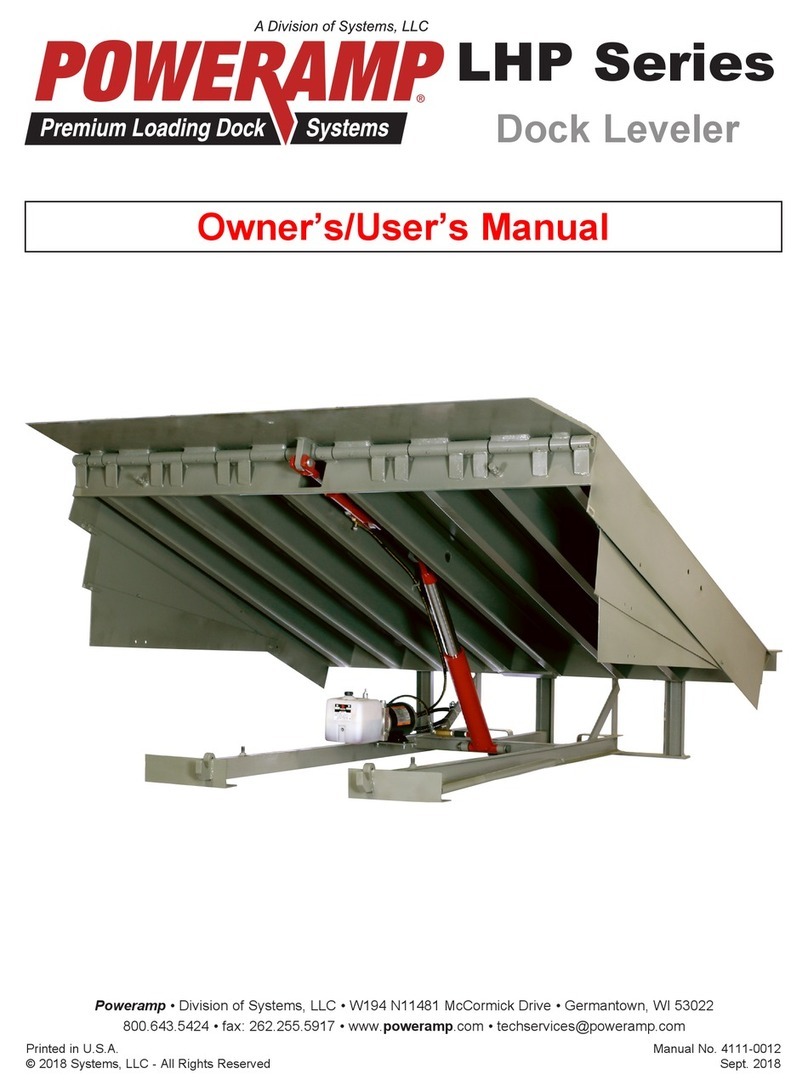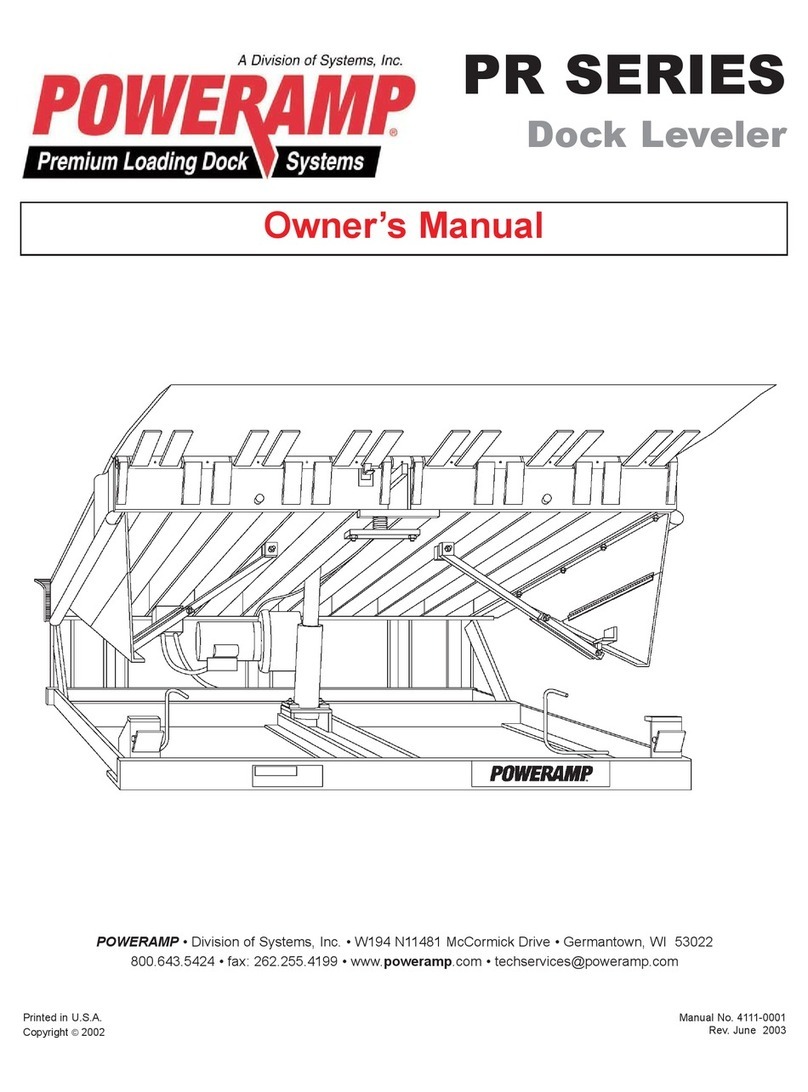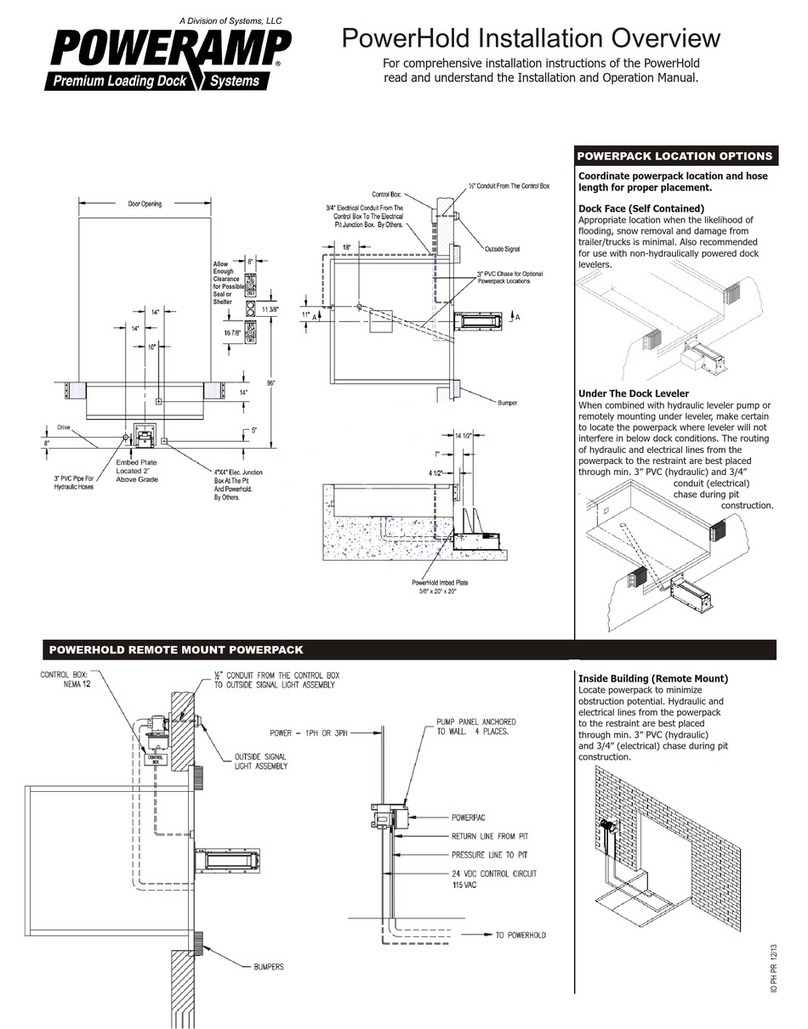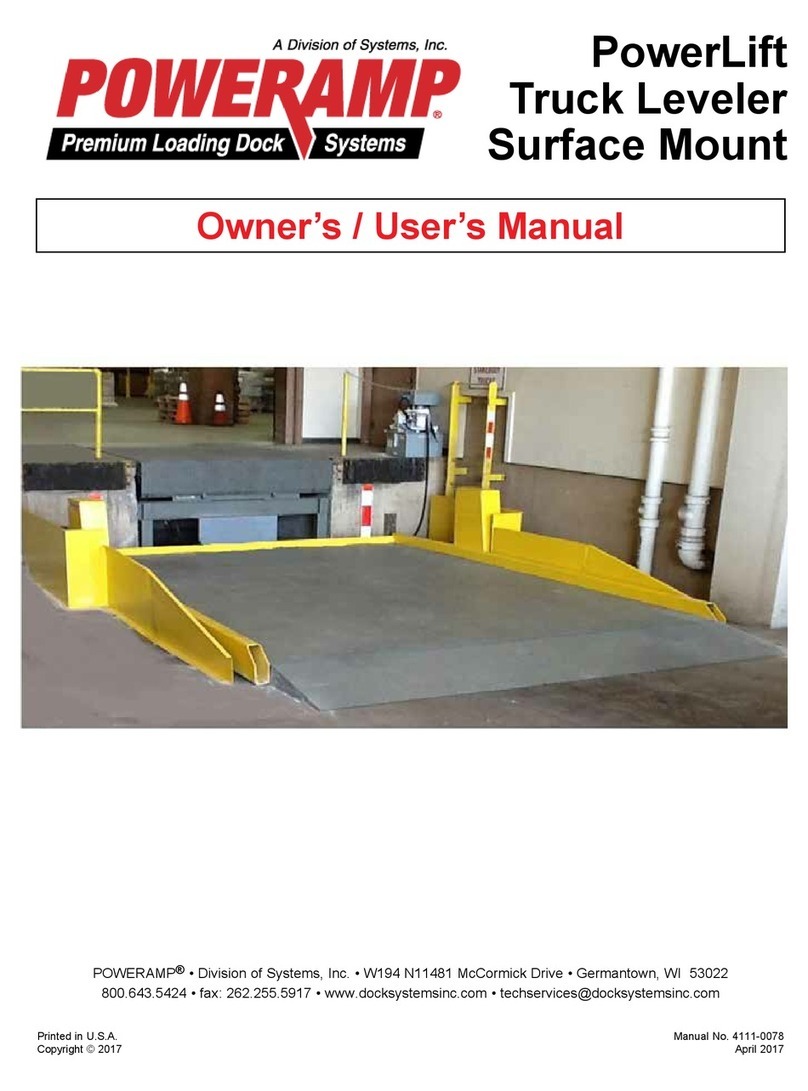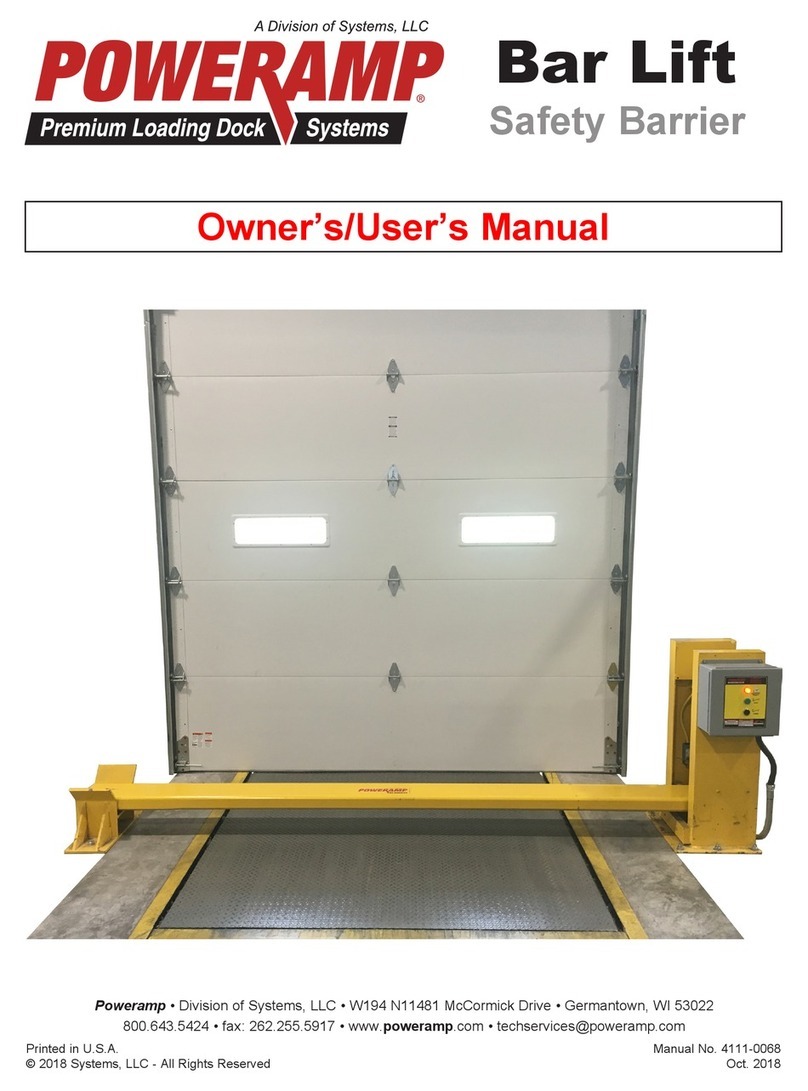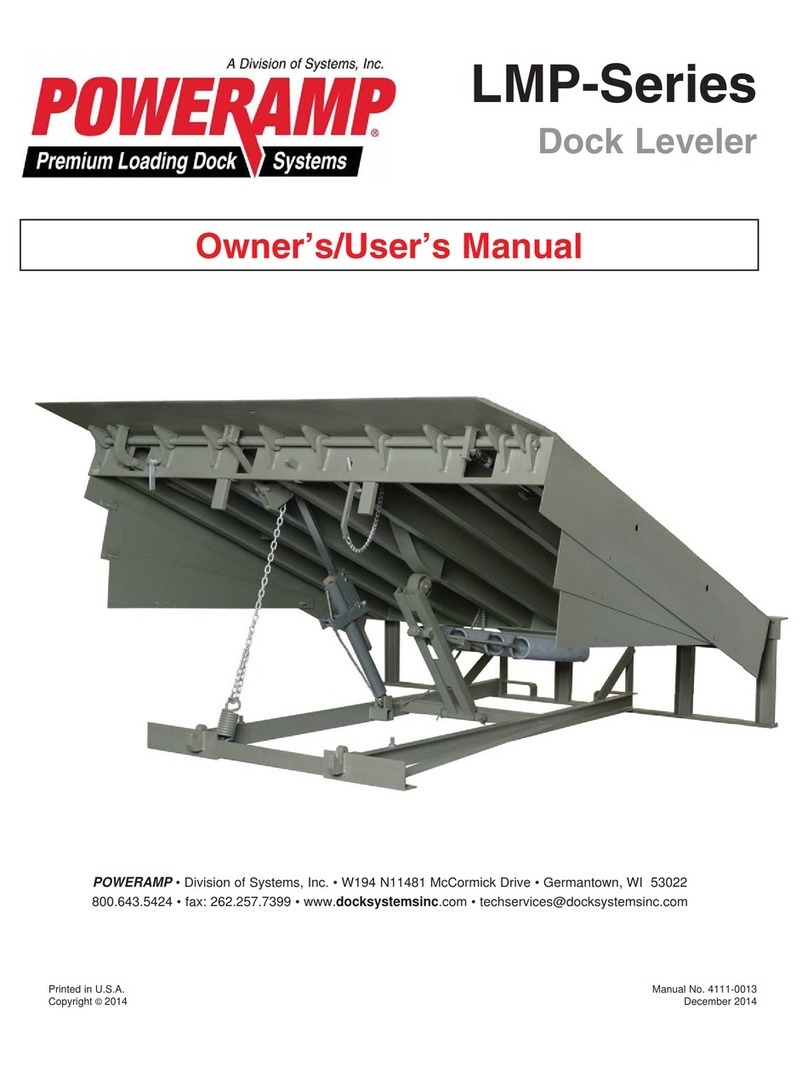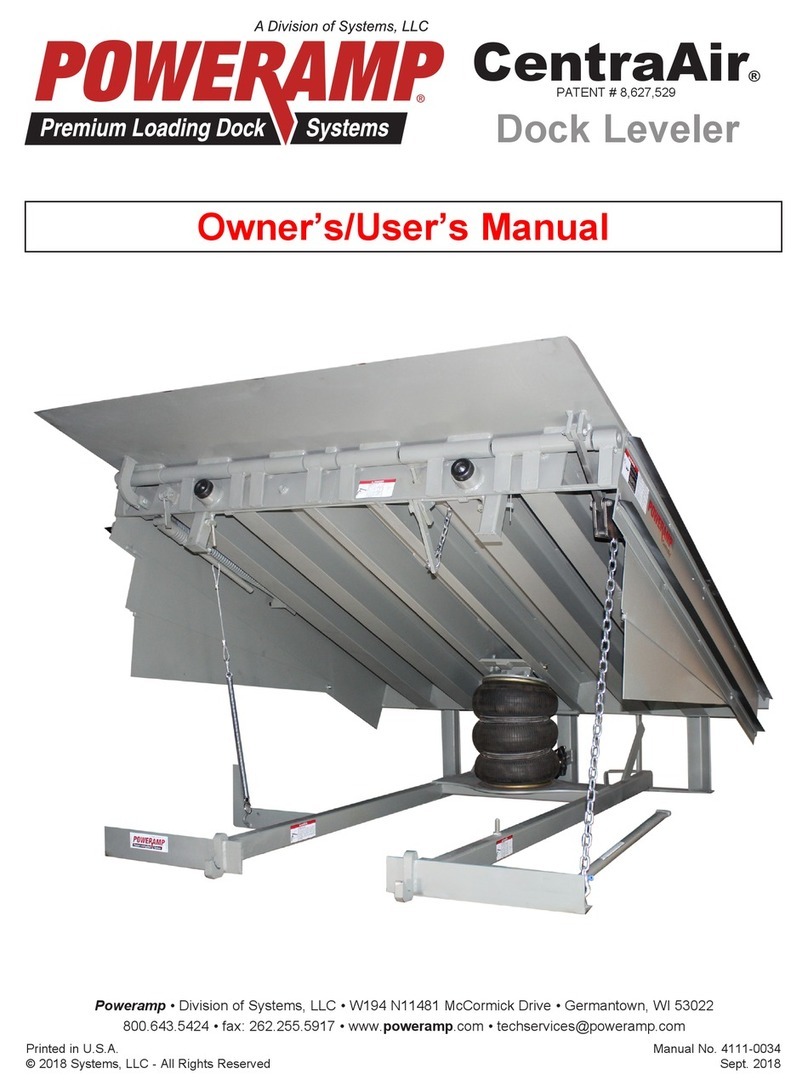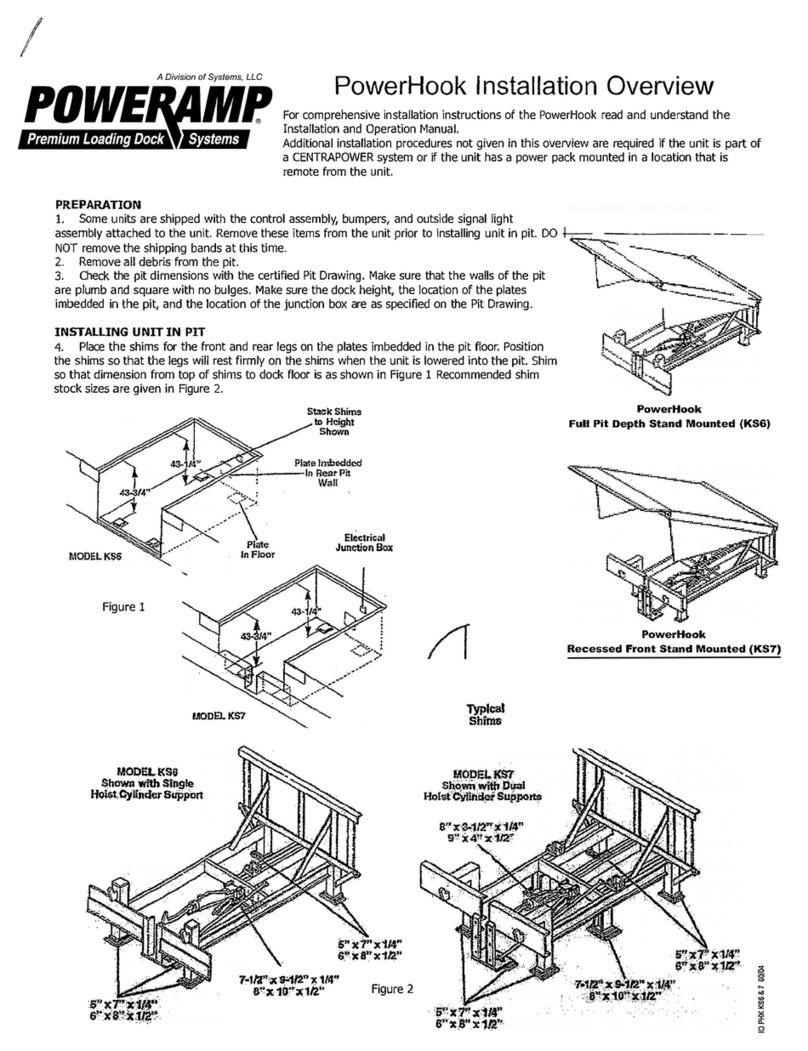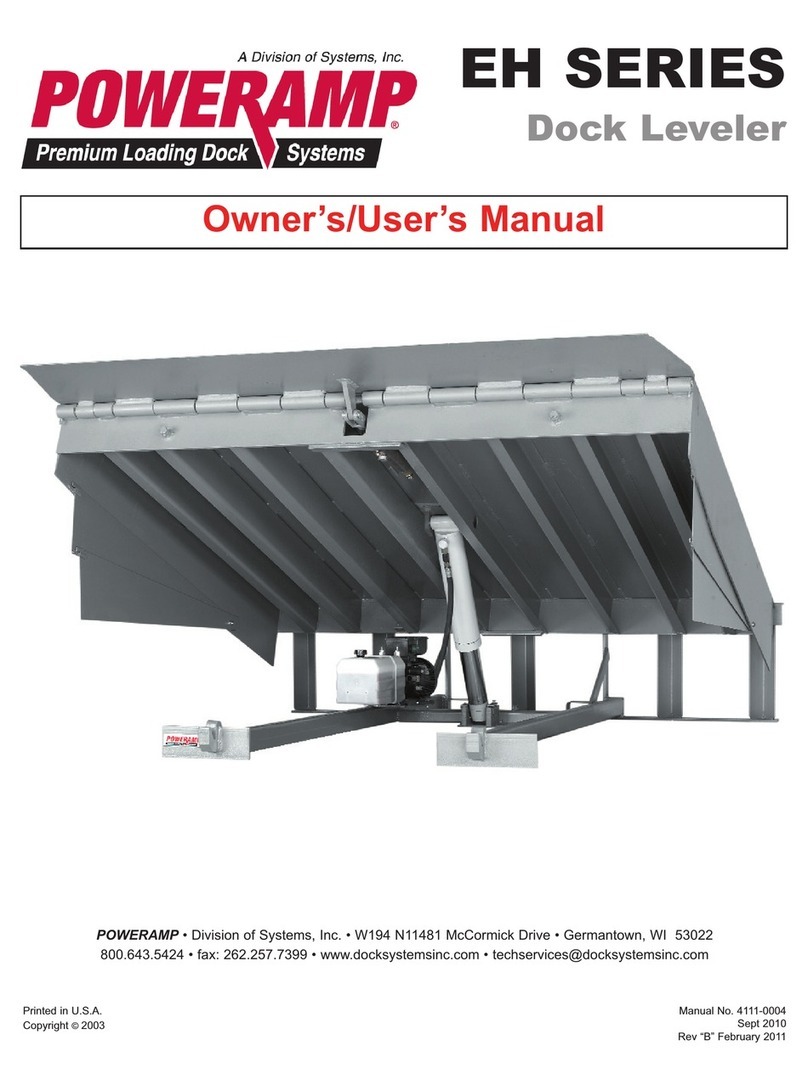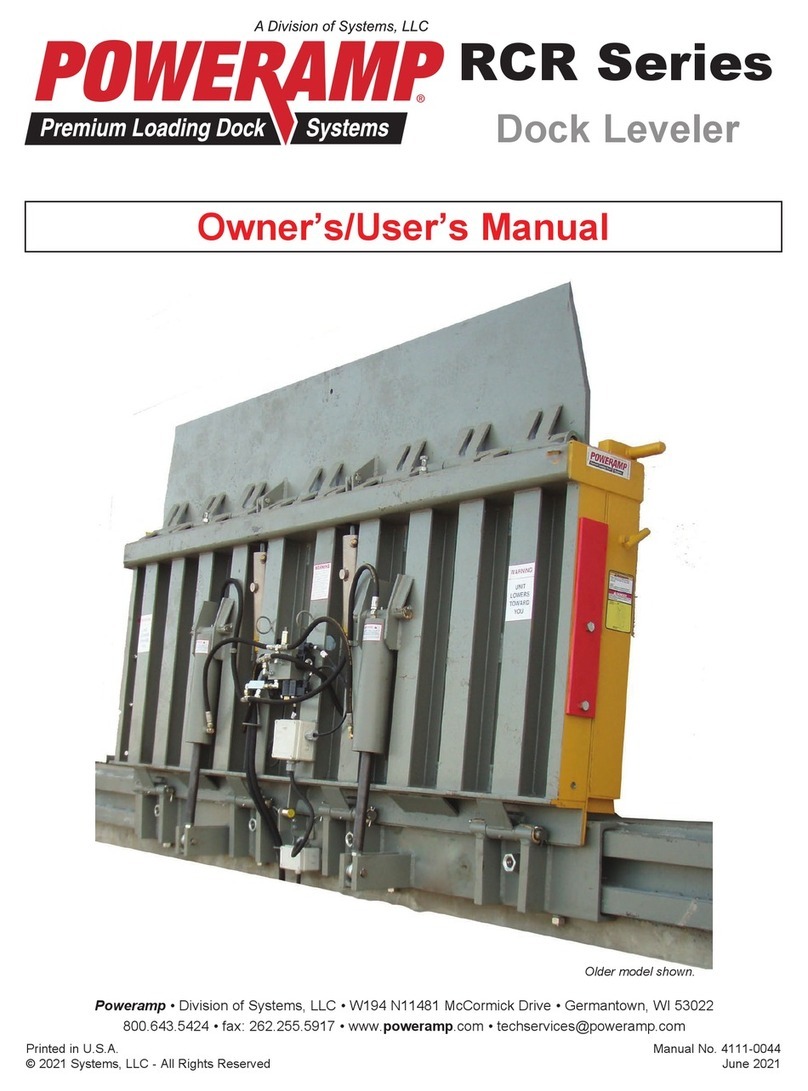
SAFETY
5
4111-0006 — Sept 2010
Safety Decals
Every 90 days (quarterly) inspect all safety labels and tags
to ensure they are on the dock leveler and are easily leg-
ible. If any are missing or require replacement, please call
1-800-643-5424 for replacements.
CRUSH HAZARD
Maintenance prop must
support leveler behind bar.
Do not force maintenance
prop forward of bar to
support lip. Refer to
owner’s/user’s manual for
proper use. Failure to
comply will result in
death or serious injury.
DANGER
1751-0727
Unsupported dock leveler
ramps can lower unexpectedly.
Before allowing vehicle to leave
the dock always:
!Ensure that no equipment,
material or people are on the
dock leveler.
!Return the dock leveler to its
stored position at dock level.
Failure to follow posted instructions will result in death or serious injury.
SAFETY INFORMATION
Call 262.255.1510 for replacement placards, warning labels, or owner’s/user’s manuals.
Operation
1. Read and follow all instructions and
warnings in the owner’s/user’s
manual.
2. Use of dock leveler restricted to
trained operators
3. Always chock trailer wheels or
engage truck restraint before
operating dock leveler or beginning to
load or unload.
4. Never use hands or equipment to
move the ramp or lip
5. Before activating dock leveler:
¥Ensure trailer is backed in against
bumpers.
¥Remove any end loads if required.
¥Check trailer alignment to avoid lip
interference. If lip does not lower to
trailer bed, reposition vehicle.
6. Ensure that truck bed supports
extended lip or the leveler frame
supports the ramp before driving on
ramp.
7. Stay clear of hinges and front and
sides of moving dock leveler.
8. Never use damaged or
malfunctioning dock leveler. Report
problems immediately to supervisor.
Maintenance/Service
1. Read and follow all instructions,
warnings and maintenance schedules
in the owner’s/user’s manual.
2. Maintenance/Service of dock leveler
restricted to trained personnel.
3. Place barriers on the driveway and on
dock floor to indicate service work is
being performed.
4. DO NOT ENTER PIT unless dock
leveler is securely supported by
maintenance prop.
5. If electrically powered turn off and use
OSHA lockout/tagout procedures.
DANGER
DO NOT
FORK THIS SIDE
FORK
HERE
CRUSH HAZARD
Do not work under dock leveler unless this maintenance prop has been secured in the
upright position. See owner’s/user’s manual for proper procedures. Failure to comply
will result in death or serious injury.
DANGER
1751-0788
CRUSH HAZARD
Open the pin latch and insert
through the maintenance
prop housing and prop
completely. Close the pin latch
to secure prop. Use every
time dock leveler is serviced.
Failure to comply will result
in death or serious injury.
DANGER
1751-0789
CRUSH HAZARD
DO NOT ENTER PIT unless dock leveler is
safely supported by maintenance prop. Place
barriers on driveway and dock floor to indicate
service work being performed. Refer to
owner’s/user’s manual for proper maintenance
procedures. Failure to comply will result in death
or serious injury.
DANGER
1751-0726
1751-0727
1751-0730 (x2)
1751-0788
1751-0789
1751-0726
CRUSH HAZARD
Do not remove main springs until leveler is safely supported by
maintenance prop. Main springs contain stored energy. Be sure
springs are fully unloaded and ends are loose before removal. Refer
to owner’s/user’s manual for proper maintenance procedure. Failure
to comply will result in death or serious injury.
DANGER
1751-0728
1751-0728
(decal placed in same position on both sides)
(decal placed in same position on both sides)
(decal placed in same position on both sides)
1751-0329 (x2)
1751-0330 (x2)
